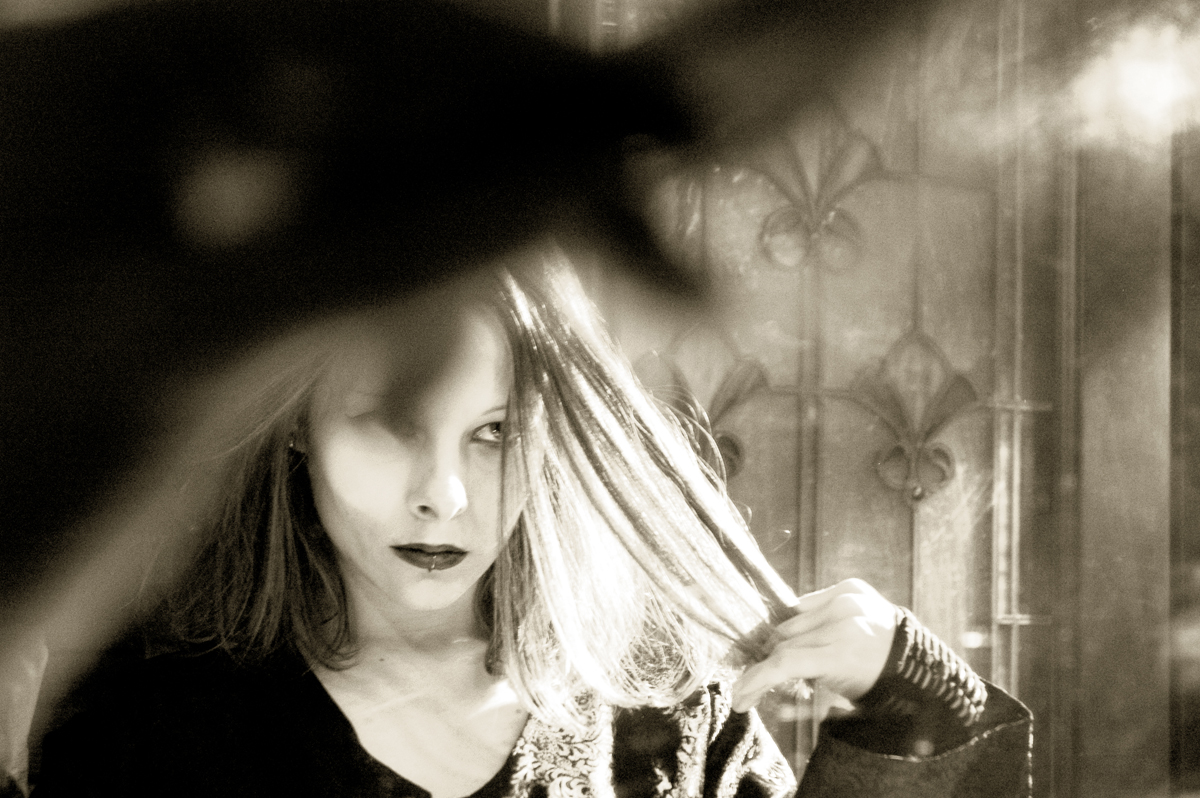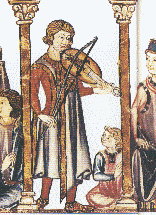|
Neoclassical Dark Wave
Neoclassical dark wave is a subgenre of dark wave music that is characterized by an ethereal atmosphere and soprano vocals as well as strong influences from classical music. Historical context In the middle of the 1980s, the bands Dead Can Dance and In the Nursery released influential albums which essentially laid the foundations of the Neoclassical dark wave genre. In 1985 Dead Can Dance released ''Spleen and Ideal'', which initiated the band's 'medieval European sound.' In 1987 In the Nursery released Stormhorse, which exhibited a symphonic/post-industrial sound lending itself to 'being envisioned as backing music for a dramatic epic.' See also * Dark ambient * Martial industrial (martial music) * Neofolk * Dungeon Synth Dungeon synth is a genre of electronic music that merges elements of black metal and dark ambient. The style emerged in the early 1990s, predominantly among members of the black metal scene, such as Mortiis, Burzum, Robert Fudali of Lord Win .. ... [...More Info...] [...Related Items...] OR: [Wikipedia] [Google] [Baidu] |
Dark Wave
Dark wave (also typeset as darkwave) is a music genre that emerged from the new wave and post-punk movement of the late 1970s. Dark wave compositions are largely based on minor key tonality and introspective lyrics and have been perceived as being dark, romantic and bleak, with an undertone of sorrow. The genre embraces a range of styles including cold wave,Schilz, Andrea: ''Flyer der Schwarzen Szene Deutschlands: Visualisierungen, Strukturen, Mentalitäten.'' Waxmann Verlag, 2010, , p. 84. ethereal wave, gothic rock,Uecker, Susann: ''Mit High-Heels im Stechschritt'', Hirnkost Verlag, 2014, neoclassical dark wave and neofolk. In the 1980s, a subculture developed primarily in Europe alongside dark wave music, whose followers were called ''wavers'' or ''dark wavers''. In some countries such as Germany, the movement also included fans of gothic rock (so-called ''trad-goths''). 1980s: Origins Since the 1980s, SPEX. Musik zur Zeit: ''Classified Ad by German distribution ... [...More Info...] [...Related Items...] OR: [Wikipedia] [Google] [Baidu] |
Classical Music
Classical music generally refers to the art music of the Western world, considered to be distinct from Western folk music or popular music traditions. It is sometimes distinguished as Western classical music, as the term "classical music" also applies to non-Western art music. Classical music is often characterized by formality and complexity in its musical form and harmonic organization, particularly with the use of polyphony. Since at least the ninth century it has been primarily a written tradition, spawning a sophisticated notational system, as well as accompanying literature in analytical, critical, historiographical, musicological and philosophical practices. A foundational component of Western Culture, classical music is frequently seen from the perspective of individual or groups of composers, whose compositions, personalities and beliefs have fundamentally shaped its history. Rooted in the patronage of churches and royal courts in Western Europe, surviving earl ... [...More Info...] [...Related Items...] OR: [Wikipedia] [Google] [Baidu] |
Early Music
Early music generally comprises Medieval music (500–1400) and Renaissance music (1400–1600), but can also include Baroque music (1600–1750). Originating in Europe, early music is a broad musical era for the beginning of Western classical music. Terminology Interpretations of historical scope of "early music" vary. The original Academy of Ancient Music formed in 1726 defined "Ancient" music as works written by composers who lived before the end of the 16th century. Johannes Brahms and his contemporaries would have understood Early music to range from the High Renaissance and Baroque, while some scholars consider that Early music should include the music of ancient Greece or Rome before 500 AD (a period that is generally covered by the term Ancient music). Music critic Michael Kennedy excludes Baroque, defining Early music as "musical compositions from heearliest times up to and including music of heRenaissance period". Musicologist Thomas Forrest Kelly considers that the ... [...More Info...] [...Related Items...] OR: [Wikipedia] [Google] [Baidu] |
Ethereal Wave
Ethereal wave,Glasnost Wave magazine, issue # 42, p. 32/34, genre classification of the bands Trance to the Sun (''"Ghost Forest"''), This Ascension (''"Light and Shade"''), Soul Whirling Somewhere (''"Eating the Sea"''), Cocteau Twins and Lycia, Germany, April 1994Thomas Wacker: ''Projekt Records label portrait'', Black music magazine, issue # 7/97, p. 66, Spring 1997 also called ethereal darkwave, ethereal goth Propaganda: ''Projekt: Ethereal Gothic'', advertisement, issue # 19, p. 19, New York, September 1992 or simply ethereal, is a subgenre of dark wave music that is variously described as "gothic", "romantic", and "otherworldly".Michael Fischer: "The ethereal romanticism of this EP makes for the closest thing in pop to a music for Gothic cathedrals"', Cocteau Twins review ("Love's Easy Tears"), The Michigan Daily, p. 7, March 23, 1987 Developed in the early 1980sRick Poynor: ''Vaughan Oliver. Visceral Pleasures'', p. 75, Booth-Clibbo ... [...More Info...] [...Related Items...] OR: [Wikipedia] [Google] [Baidu] |
Martial Industrial
Martial industrial is a syncretic offshoot of industrial music characterized by noise, dark ambient atmospheres, neofolk melodies, dark wave tunes and neoclassical orchestrations as well as the incorporation of audio from military marches, historical speeches and political, apolitical or metapolitical lyrics. Unlike other post-industrial genres, martial industrial is typically interested more in a particular worldview or philosophy than pure experimentalism. History Laibach were one of the first bands to incorporate military marches in their industrial music and display politically provocative aesthetics. Front 242 was also known for adding a futuristic military influence to their music too. Boyd Rice and Douglas P., the noise and neofolk pioneers, respectively, adopted such attitude at several occasions to its extreme. Allerseelen, either through ritual hymns or alchemical folklore followed in the same vein. Similarly militant but less provocative and more esoteric were the ... [...More Info...] [...Related Items...] OR: [Wikipedia] [Google] [Baidu] |
Industrial Music
Industrial music is a genre of music that draws on harsh, mechanical, transgressive or provocative sounds and themes. AllMusic defines industrial music as the "most abrasive and aggressive fusion of rock and electronic music" that was "initially a blend of avant-garde electronics experiments (tape music, musique concrète, white noise, synthesizers, sequencers, etc.) and punk provocation". The term was coined in the mid-1970s with the founding of Industrial Records by members of Throbbing Gristle and Monte Cazazza. While the genre name originated with Throbbing Gristle's emergence in the United Kingdom, artists and labels vital to the genre also emerged in the United States and other countries. The first industrial artists experimented with noise and aesthetically controversial topics, musically and visually, such as fascism, sexual perversion, and the occult. Prominent industrial musicians include Throbbing Gristle, Monte Cazazza, SPK, Boyd Rice, Cabaret Voltaire, and Z'E ... [...More Info...] [...Related Items...] OR: [Wikipedia] [Google] [Baidu] |
Dungeon Synth
Dungeon synth is a genre of electronic music that merges elements of black metal and dark ambient. The style emerged in the early 1990s, predominantly among members of the black metal scene, such as Mortiis, Burzum, Robert Fudali of Lord Wind and Graveland, Tomi Kalliola of Azaghal and Valar, Sigurd Wongraven of Wongraven and Satyricon, Andreas Bettinger of Grausamkeit, Silenius and Protector of Summoning, Die Verbannten Kinder Evas, Abigor, Pazuzu, and Grabesmond, Ray Heflin of Absu, and Equitant, among others. The genre employs aesthetics and themes typically associated with black metal juxtaposed to the typical heavy tremolo-picking, blast-beats, and harsh, shrieked vocals of black metal by way of compositions of instrumental or ambient music commonly used as introductions, interludes, or "outros" in black metal, death metal, and heavy metal albums throughout the 1980s and 1990s. Though often paired with medieval and fantasy motifs throughout the 1990s onward, some ... [...More Info...] [...Related Items...] OR: [Wikipedia] [Google] [Baidu] |
Dark Wave
Dark wave (also typeset as darkwave) is a music genre that emerged from the new wave and post-punk movement of the late 1970s. Dark wave compositions are largely based on minor key tonality and introspective lyrics and have been perceived as being dark, romantic and bleak, with an undertone of sorrow. The genre embraces a range of styles including cold wave,Schilz, Andrea: ''Flyer der Schwarzen Szene Deutschlands: Visualisierungen, Strukturen, Mentalitäten.'' Waxmann Verlag, 2010, , p. 84. ethereal wave, gothic rock,Uecker, Susann: ''Mit High-Heels im Stechschritt'', Hirnkost Verlag, 2014, neoclassical dark wave and neofolk. In the 1980s, a subculture developed primarily in Europe alongside dark wave music, whose followers were called ''wavers'' or ''dark wavers''. In some countries such as Germany, the movement also included fans of gothic rock (so-called ''trad-goths''). 1980s: Origins Since the 1980s, SPEX. Musik zur Zeit: ''Classified Ad by German distribution ... [...More Info...] [...Related Items...] OR: [Wikipedia] [Google] [Baidu] |
Classical Music
Classical music generally refers to the art music of the Western world, considered to be distinct from Western folk music or popular music traditions. It is sometimes distinguished as Western classical music, as the term "classical music" also applies to non-Western art music. Classical music is often characterized by formality and complexity in its musical form and harmonic organization, particularly with the use of polyphony. Since at least the ninth century it has been primarily a written tradition, spawning a sophisticated notational system, as well as accompanying literature in analytical, critical, historiographical, musicological and philosophical practices. A foundational component of Western Culture, classical music is frequently seen from the perspective of individual or groups of composers, whose compositions, personalities and beliefs have fundamentally shaped its history. Rooted in the patronage of churches and royal courts in Western Europe, surviving earl ... [...More Info...] [...Related Items...] OR: [Wikipedia] [Google] [Baidu] |
SAGE Publishing
SAGE Publishing, formerly SAGE Publications, is an American independent publishing company founded in 1965 in New York by Sara Miller McCune and now based in Newbury Park, California. It publishes more than 1,000 journals, more than 800 books a year, reference works and electronic products covering business, humanities, social sciences, science, technology and medicine. SAGE also owns and publishes under the imprints of Corwin Press (since 1990), CQ Press (since 2008), Learning Matters (since 2011), and Adam Matthew Digital (since 2012). History SAGE was founded in 1965 in New York City by Sara Miller (later Sara Miller McCune) with Macmillan Publishers executive George D. McCune as a mentor; the name of the company is an acronym formed from the first letters of their given names. SAGE relocated to Southern California in 1966, after Miller and McCune married; McCune left Macmillan to formally join the company at that time. Sara Miller McCune remained president for 18 years ... [...More Info...] [...Related Items...] OR: [Wikipedia] [Google] [Baidu] |
Dead Can Dance
Dead Can Dance are an Australian music duo first established in Melbourne. Currently composed of Lisa Gerrard and Brendan Perry, the group formed in 1981. They relocated to London the following year. Australian music historian Ian McFarlane described Dead Can Dance's style as "constructed soundscapes of mesmerising grandeur and solemn beauty; African polyrhythms, Gaelic folk, Gregorian chant, Middle Eastern music, mantras, and art rock." Having disbanded in 1998, they reunited briefly in 2005 for a world tour and reformed in 2011 when they released and toured a new album, '' Anastasis''. They released a new album in 2018 called ''Dionysus'' and toured Europe in 2022. Career Formation and early years Dead Can Dance was formed in Melbourne, Australia, in August 1981 with Paul Erikson on bass guitar, Lisa Gerrard (ex-Microfilm) on vocals and percussion, Simon Monroe (Marching Girls) on drums and Brendan Perry (also of Marching Girls) on vocals and guitar. Gerrard and Perry were ... [...More Info...] [...Related Items...] OR: [Wikipedia] [Google] [Baidu] |


_-_WGA08174.jpg)





